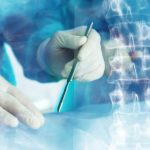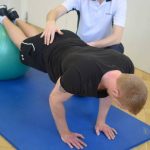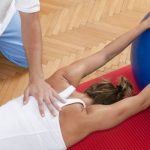According to the recent studies, one in three people has experienced neck pain at some point in his life. It is not surprising that this symptom occurs so often: the cervical spine is the most mobile and active of all. We use the cervical vertebrae and neck muscles by turning our head when someone calls us, when we carefully examine something under our feet or look at the sky. The number of movements produced by the neck during the day is uncountable. That is why the cervical spine is most prone to injury.
What can cause pain in the cervical spine?
There are many reasons, we will discuss the main ones.
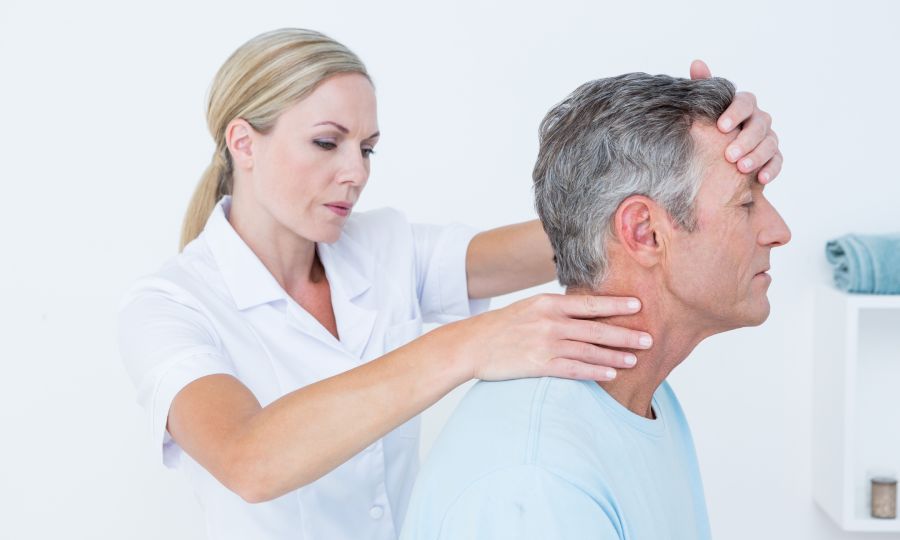
Age-related changes in the musculoskeletal system.
Before reviewing the causes that directly cause spinal injury, it is necessary to recall age-related changes in bone and cartilage tissues – inevitable processes in human life. Over time, the structure of bones, cartilage and joints changes – this is called degenerative processes. Such processes can cause constant pain in the neck. These include:
Osteochondrosis
Osteochondrosis is the gradual destruction of the intervertebral discs and the vertebrae themselves. This condition at an early stage is characterized by discomfort in the neck, painful sensations that increase after active head movements, sleeping in an uncomfortable position, and also after exposure to drafts. Over time, the pains intensify and turn from pulling into “shooting” – very intense, sharp, short-term pain sensations.
Intervertebral hernia
Intervertebral hernia occurs as osteochondrosis progresses as a result of the gradual destruction of the intervertebral disc, its displacement and “protrusion” between the vertebrae. In this condition, the damaged intervertebral disc begins to compress nearby nerves, and sometimes, if the “bulge” is too large, then create pressure on the spinal cord, thus causing spinal stenosis and associated neurological manifestations. The pain becomes very intense, constant. Turning the head in this state is impossible. Patients may feel weakness in the upper limbs, any action becomes difficult. This condition requires qualified medical attention. In the absence of urgent indications for surgical treatment, very effective conservative methods are prescribed, which include: physiotherapy, various types of massage, manual therapy, cervical traction, and a set of special physical exercises.
Risk factors for a herniated disc include age over forty years, smoking, overweight, heavy physical exertion, repetitive movements, prolonged exposure to a certain uncomfortable position (long sitting near a computer screen, etc.).

Chronic stress on the neck muscles
Another common cause of neck pain is chronic stress. Most often, unpleasant sensations are associated with a long stay in a forced position, when in the modern world, in the conditions of modernization, a sedentary, sedentary lifestyle more and more dominates. Office workers, students, employees of enterprises are most susceptible to such pains. The pains in this case are pulling, intensifying in the evening. Here it would be appropriate to mention one of the most common syndromes associated with impaired posture, impairment of the ergonomic principles of workplace equipment, and, as a result, increasing chronic stress on the neck muscles.
Upper crossed syndrome (UCS)
One of the causes of neck pain, as well as pain in the shoulders, is the so-called upper crossed syndrome. This syndrome is so common that you can probably imagine what its manifestations look like. We will understand it further when we discuss its clinical symptoms.
The upper crossed syndrome occurs in people who spend a long time in an uncomfortable position, mainly for working at a computer or other gadgets, reading, watching TV. A person while working so does not control his posture: his spine is bent, and his head and neck are pulled forward.
When a person spends a long time in this regime, the muscles of his back, namely the dentate and trapezius, weaken, lose their ability to perform their function and maintain posture. The human body is a well-oiled mechanism, therefore, if some of its elements do not fully function, adaptive, compensatory reactions are activated: in this case, in response to the weakening of the back muscles, the pectoral muscles and neck muscles are in constant tension. Due to the peculiarities of muscle imbalance that the syndrome is called “crossed”.
Now, knowing which muscles are affected in the upper crossed syndrome, we can easily imagine a person prone to such a disorder: due to weakness of the back muscles, he will be stooped, his shoulders will be “round”, and due to the tension in the chest and neck muscles, his head will be slightly extended forward. Such a patients, in addition to posture disorders, will be disturbed by headaches, a feeling of heaviness and pain in the neck and shoulders, pain in the chest and upper limbs.
The upper crossed syndrome is a common condition affecting a large percentage of the population. The best method of its prevention and treatment is physical exercises, preventive stretching prescribed by a qualified specialist, which will restore the functions of the musculoskeletal system and relieve unpleasant symptoms, as well as compliance to the regime of work and rest. If you need to work in an uncomfortable position for a long time, you should make breaks every 15 minutes.
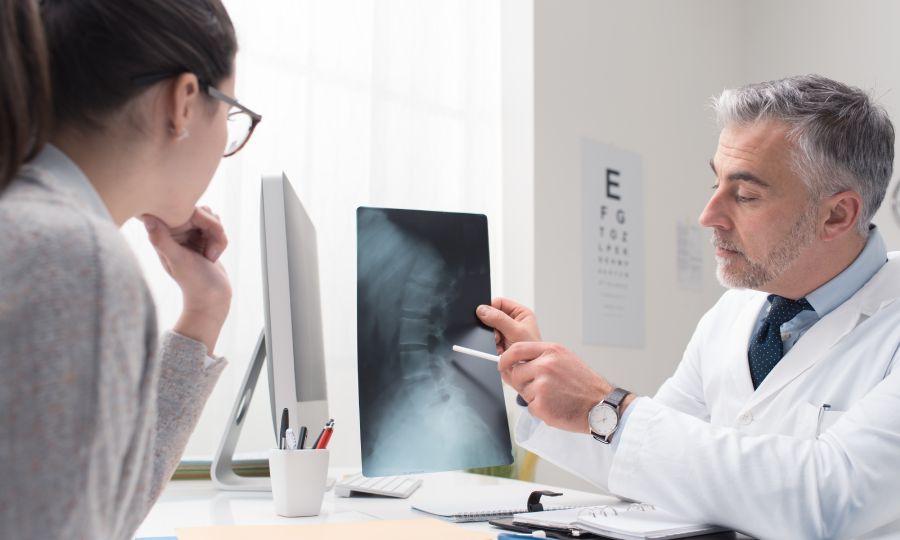
Injuries
It is very simple to determine that the pain has arisen exactly as a result of traumatization: the pain syndrome will always be preceded by mechanical damage, immediately after which or after some time, after which symptoms will appear. Soreness is often combined with soft tissue damage – one of the most common injuries resulting from car accidents and a sharp blow from behind is a “whiplash injury” when, from an unexpected blow, the head makes a sharp triple movement – back, forward, back.
Studies conducted using the MRI technology on a large number of patients with previous ‘whiplash injury” have shown a very interesting result – the main damage of the muscle tissue occurs in the “deep flexors” of the neck, causing them to become weak in a short period of time. Currently, a special rehabilitation system has been developed, which includes a whole range of rehabilitation exercises.
Sometimes, soft tissue damage may be accompanied by damage to the intervertebral discs, as well as neurological manifestations, such as: radiating pain in the arm, numbness of various areas of the upper limb and fingers
There are two main causes of neck pain as a result of an injury:
-
With a bruise, the pain can be sharp, throbbing or pulling, but the ability to move the head is preserved, although you can move with difficulty.
-
Vertebral fractures. Such injuries occur as a result of car accidents, falls from a height, or a blow to the neck from behind. This condition is characterized by very severe pain. A very important difference between a fracture and a bruise is that with a fracture, head movements are completely impossible. In addition, since the spinal cord is enclosed in the spine, with a fracture, sensitivity and motor functions are impaired.
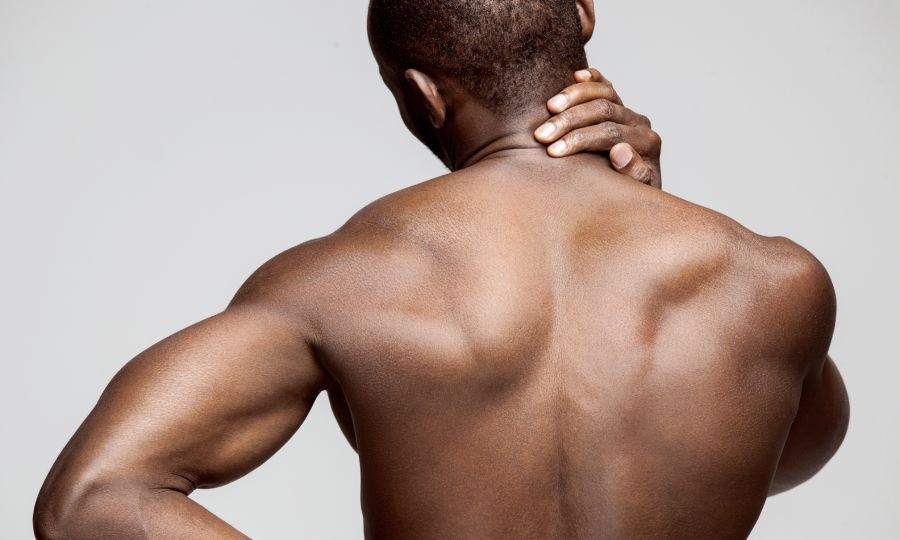
Muscle diseases
Muscular pain in the neck is a consequence of such processes:
- Strong tension in the neck muscles, as a result of incorrect posture, a long stay in the incorrect position (sitting at the computer, lifting weights). In this case, manual therapy methods are applicable, as well as kinesiotherapy, physiotherapy and exercises for stretching muscle tissue are especially recommended.
- Traumatic injury – usually, an additional examination and a detailed installation of the correct diagnosis and the degree of damage are always required.
- Muscle inflammation or myositis – a common cause of muscle pain, which is usually inflammatory or viral in nature.
The latter diseases are treated mainly with drugs, and therefore it is necessary to consult a medical specialist.
Instability of the cervical vertebrae
Hypermobility caused by muscle imbalance as well as degenerative processes in the intervertebral discs, along with various spinal injuries. This problem is so complex and hazardous (displacement of the vertebrae, spinal stenosis, pressure on the peripheral nerves) that it requires a special rehabilitation approach and a complex set of exercises aimed at strengthening the muscles and stabilizing the vertebrae.
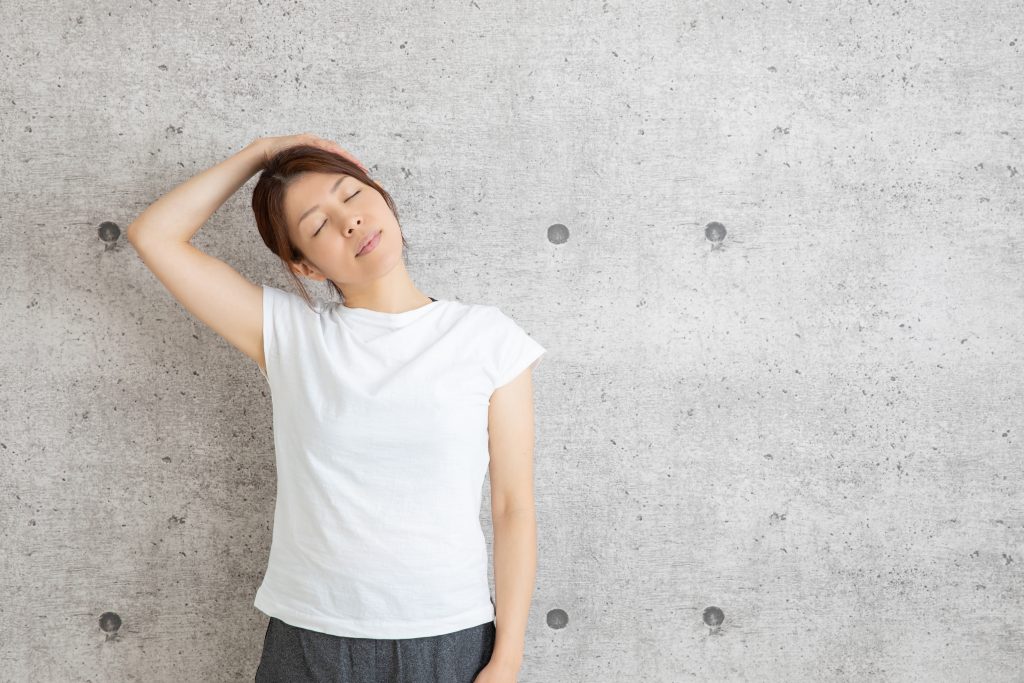
ANATOMY, PHYSIOLOGY AND BIOMECHANICS
The causes of neck pain can be related not only to the musculoskeletal disorder, which we discussed above, but also with infectious diseases, immune disorders, nerve damage or neoplasms. To exclude any pathology, be sure to seek medical help from a qualified medical specialist.
What is the mechanism of development of pain in the neck?
Despite the many causes of the disorder, painful symptoms often occur according to similar principles. In order to understand this, let us dwell briefly on the anatomy of the cervical spine.
The cervical spine connects the human head and torso. It consists of seven vertebrae, which are interconnected with the help of cartilage – intervertebral discs. Each vertebra consists of a body on which the intervertebral disc lies, and an arc – bone processes extending horizontally from each side of the body and connecting to each other. Thus, between the body and the arch of the vertebrae, a vertebral foramen is formed, in which the spinal cord and the spinal nerves extending from it at a certain level are located.
Intervertebral discs lying between the vertebrae play the role of a kind of “cushion”, they not only provide a strong connection between the vertebrae, but also cushioning during movement, which protects the vertebrae from mechanical injury. With degenerative damage to the vertebrae and intervertebral discs, as happens with age-related changes or osteochondrosis, the “cushion” gradually loses its function. Over time, the vertebrae approach each other and begin to compress the spinal nerves, which causes pain.
Most often, pain in the cervical spine is accompanied by other unpleasant symptoms: headache, dizziness. These symptoms are due to the fact that blood vessels feeding the brain are located from both sides of the spinal column. In spine diseases, these vessels can be pinched in the same way as nerves. As a result, blood flow to the brain deteriorates, and there are pressing pains that radiate to the back of the head, as well as dizziness. Treatment of the spine diseases resolves successfully such symptoms.

How to treat pain in the cervical spine?
First of all, you need to consult a physician who will select the necessary treatment for you, based on the cause of your symptoms. So, in the case of acute processes, for example, with myositis, drugs that relieve inflammation will be prescribed. To relieve pain, analgesics are prescribed, which, however, do not fight the cause of pain, but only reduce it. In vertebral fractures, surgical treatment is indicated, which is necessary to restore the structure of the spinal column. In rare cases, in severe forms of osteochondrosis, surgical methods of treatment are used to reduce pressure on the nerve roots. This method, as we already know, will help relieve pain and improve the quality of life of any patient. However, radical methods are rarely used, due to the high efficiency of rehabilitation therapy. Physiotherapy and specially designed physical exercises, modern systems of rehabilitation procedures, have been and remain the most effective methods of treating pain in the cervical spine, which allow not only to relieve symptoms, but also to prevent relapses.
Physiotherapy
Video: “Exercises for the CERVICAL SPINE”
SET OF EXERCISES №1 FOR THE CERVICAL SPINE. INITIAL STAGE OF RECOVERY
For additional information about the exercises for the Cervical spine you can watch a video demonstrating exercises and rehabilitation recommendations.

Check out the demo version of our sets of exercises for Cervical spine on YouTube
Our website presents the following sets of exercises for the cervical spine:


